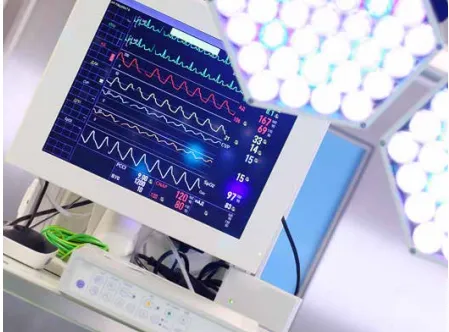
Check out what’s new at Asia’s largest hospitals
From MRI- safe incubators to integrated Chinese and Western medicine clinics, Asian healthcare providers continue to innovate.
Healthcare Asia’s spot check of some of Southeast Asia’s largest hospitals, based on number of beds, found interesting innovations and expansionary plans to cater to the growing demand for quality healthcare. Singapore General Hospital (SGH), the second largest in Singapore with 1,600 beds, opened a 300 sq m ‘one-stop’ transplant centre in November last year, to provide integrated services for patients undergoing a kidney, liver or complex cornea transplant.
Singapore
Around 1000 transplant patients at SGH will no longer have to shuttle between different clinics for various services. Media reports state that the new centre, billed as one-of-a- kind in Asia, can handle some 160 visitors a day. KK Women’s and Children’s Hospital (KKH), Singapore’s 5th largest with 803 beds, has enhanced its Neonatal Intensive Care Unit (NICU), with greater capacity and new features, to further augment care for newborn babies suffering from serious medical conditions. With an operating capacity of 32 beds, KKH claims its new NICU is the largest in Southeast Asia.
KKH is also proud to be the first hospital in Asia to have an MRI-safe incubator. This specially designed incubator ensures added protection, as well as comfort for premature babies who require MRI scans. According to Head and Senior Consultant at KKH’s Department of Neonatology Victor Samuel Rajadurai, the Neonatal ICU manages approximately 400-450 admissions a year.
A new oncology clinic by National Cancer Centre Singapore (NCCS) has been set up at Changi General Hospital (CGH), Singapore’s sixth largest hospital with 800 beds. The NCCS Oncology Clinic at CGH provides oncological consultation and outpatient chemotherapy for CGH patients with breast and gastrointestinal cancer, which are the most common types of oncology cases. The clinic started operations in March 2013 and currently sees about 23 patients for consultation weekly, with numbers growing steadily.
Hong Kong
Hong Kong’s Hospital Authority (HA) implemented a new billing system in all public hospitals on January 8 to handle more than one million patient discharges each year.
The new system consolidates , in a single bill, charges for a patient in all hospitals on 8 January and treatment episodes within the billing period. Patients can also settle the bill in any hospital shroff, alongside other payment methods such as 7-Eleven convenience stores and internet banking services. According to HA, the newly introduced monthly summary statement will provide patients with a concise overview of all unsettled bills for services used in any public hospitals.
HA also welcomed a proposed grant for hospital improvements. The HK Government has proposed a lump sum grant of $13 billion for carrying out minor improvement works in public hospitals and clinics in the coming decade. “Currently under HA, there are 42 public hospitals, 47 specialist outpatient clinics and 73 general outpatient clinics housed in nearly 300 buildings.
“While over 56% of the buildings were completed more than 30 years ago and some even over 85 years, many required refurbishment and upgrading in electrical and mechanical engineering standards,” says The Chairman of the Hospital Authority Mr Anthony Wu. He adds that the accessibility of many hospitals and clinics would also need to be improved for the elderly and disabled, while alteration and expansion works in wards and clinics are required to enhance service capacity to meet the needs of a growing and ageing population.
It is estimated that the lump sum grant of $13 billion, replacing the annual block funding allocation, could support all minor works projects, costing below $75 million each, at various hospitals and clinics over the territory for the next ten years or so. Hong Kong looks forward to the expansion of the four-decade-old United Christian Hospital from 1,400 to 1,700 bed capacity. Two of the oldest hospitals in Hong Kong – Queen Mary Hospital and Kwong Wah Hospital – will also be redeveloped. Queen Mary Hospital is HK’s fourth largest hospital with 1,698 beds.
The five-decade-old Kwong Wah Hospital’s redevelopment will include the construction of a Chinese medicine outpatient clinic and in-patient integrated Chinese and western medicine ward; Chinese medicine laboratory and radiology facilities; an Accident and Emergency department and emergency medicine ward; and in-patient wards, operating theatres, and intensive care units.
This redevelopment would make it one of the largest modern hospitals with over 1200 beds in Hong Kong. According to Wu, the Hong Kong government increased its support to HA by 6.7% in annual recurrent funding in 2012-13 to HK$42 billion.
Malaysia
Malaysia will soon have a dedicated specialist hospital for children with an expected 1900 staff, including 135 specialists and medical officers. The hospital, to be known as the Universiti Kebangsaan Malaysia (UKM) Permata Children’s Specialist Hospital will provide treatment in niche areas in paediatric medicine and surgery. The RM606m project will be built on the grounds of Hospital UKM l, Malaysia’s fifth largest hospital with 1040 beds, and is expected to be ready in 2017.
Aiming to make Hospital Kuala Lumpur, Malaysia’s largest hospital with 2229 beds, a world-class hospital, Prime Minister Datuk Seri Najib Tun Razak has asked that a multi-level car park be built and completed by Jan 2015. An allocated budget of RM300m was announced for its upgrading.
Philippines
The Medical City, one of Philippine’s 10 largest hospitals with 800 beds, has launched an innovative service that provides its patient-partners with easy and secure access to their medical records via the Internet, free of charge. Dubbed “TMC Partner Link,” the online facility allows patients to view their laboratory and radiology diagnostic results, as well as discharge summaries, wherever they are. It also features various health trackers that enable patients to monitor their vital signs via a graphic interface.
“For now, we have trackers for blood pressure, heart rate, blood sugar and weight,” says Dr. Mike Muin, health IT head of The Medical City. “What’s unique about these trackers is that they are integrated with our electronic medical records, and allow doctors to monitor their patients without frequent hospital visits. It fully embraces the concept of patient partnership beyond the walls of the hospital.”
Public hospitals in the Philippines remain in need of more funding. The Vicente Sotto Memorial Medical Center (VSMMC), also one of the largest hospitals in the country with 800 beds, is asking the National Government to give them an P8-million additional allocation to address the increasing number of patients following the partial closure of the Cebu City Medical Center (CCMC) and the super Typhoon Yolanda in November. CCMC’s building was declared unsafe following the 7.2 magnitude earthquake last 2013.
The Armed Forces of the Philippines Medical Center (AFP), Philippines’ fourth largest hospital with 1,200 beds has meanwhile signed a Public-Private Partnerhip programme with Philippine business tycoon and chairman of the Makati Medical Center Foundation (MMC) Manuel V. Pangilinan last June.
The programme is aimed at improving and expanding the services of the country’s prime hospital for soldiers. The programme allows both AFPMC and MMC to share technical resources and open their hospital facilities for conferences, workshops, training sessions, and coaching and mentoring sessions. The MMC will provide these for free to all AFPMC management staff, residents and doctors.
Outlook
Moving forward, Frost & Sullivan expects the expansion of private care services in emerging markets. The private healthcare services industry is still in a strong growth phase, with key players eyeing expansion activities in countries such as China and Indonesia where the addressable market remains untapped, says Bhuller. The focus on cross border treatment is also driving new partnerships and services where healthcare services merge with hospitality services.



















 Advertise
Advertise






